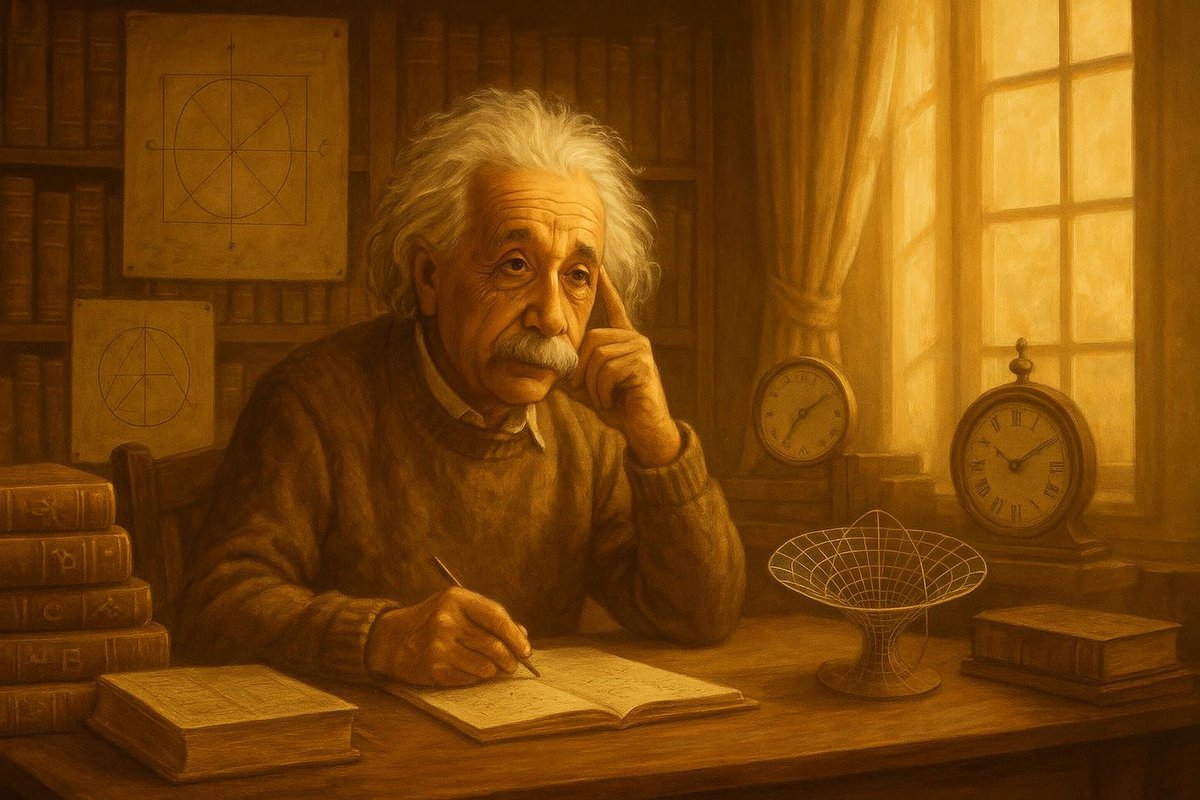
Have you ever wondered how time could be affected by speed? This fascinating concept is central to Albert Einstein’s Theory of Relativity, a groundbreaking idea that overhauled our fundamental understanding of space and time. Einstein’s journey to this revolutionary theory was paved with imaginative thought experiments and a daring questioning of established Newtonian physics.
The Problem with Newton’s Absolutes
To appreciate Einstein’s genius, we first need to understand the world of physics before his time. In the 17th century, Isaac Newton had established laws that described gravity and motion with such precision and simplicity that they were considered absolute truths.
- Newton’s laws depicted time and space as fixed and unchanging backdrops where the story of the universe unfolded.
- For over two centuries, these laws provided the foundation for the scientific understanding of physical phenomena.
However, by the late 19th century, cracks began to appear. As technological advancements allowed more precise measurements, scientists noticed anomalies Newton’s laws couldn’t explain. For instance, the orbit of Mercury deviated slightly from Newtonian predictions. This, among other discrepancies, hinted that perhaps time and space weren’t as absolute as previously thought.
Einstein’s Theoretical Breakthrough
Enter Albert Einstein, who was not afraid to question the ‘absolutes’ of his predecessors. A young patent clerk in Bern, Switzerland, he employed remarkable thought experiments to explore his theories.
- One notable thought experiment involved imagining riding alongside a beam of light. What would happen to time and space from this perspective?
- These mental exercises led him to conclude that time and space are not separate entities but are intertwined in a four-dimensional fabric called space-time.
Einstein proposed that the speed of light is constant in a vacuum, and it is the same for all observers, regardless of their relative motion. This radical idea laid the groundwork for his 1905 Special Theory of Relativity, which fundamentally altered our understanding of time and space.
Supporting Evidence: Bridging Theory with Reality
Einstein’s theories were initially met with skepticism. However, as the years went by, evidence began to mount, supporting his radical ideas.
- In 1919, a solar eclipse provided an opportunity to test Einstein’s predictions. Observations of starlight bending around the Sun confirmed that massive objects could indeed warp space-time, as Einstein suggested.
- This pivotal moment transformed Einstein into a global scientific icon, validating the notion that space-time is influenced by mass and energy.
Over time, experiments in particle physics and astronomical observations have continued to support Einstein’s theories. Technologies like GPS systems rely on principles of relativity to function accurately, proving the real-world applications of his abstract ideas.
Modern Relevance of Einstein’s Vision
Today, Einstein’s Theory of Relativity is not just a cornerstone of modern physics but a testament to human imagination and inquiry.
- His ideas continue to influence contemporary theories, such as quantum mechanics and the pursuit of a unified theory of everything.
- Einstein’s work reminds us of the power of questioning the status quo and the importance of creative thinking in scientific discovery.
In recent years, phenomena like gravitational waves—ripples in space-time—have been detected, offering new insights into the universe’s fabric and further confirming Einstein’s predictions. His legacy lives on, inspiring generations of scientists and thinkers to explore beyond conventional boundaries.
Reflecting on Einstein’s journey, we see a portrait of relentless curiosity and imaginative problem-solving. His willingness to question foundational beliefs and explore the universe’s mysteries through thought experiments continues to inspire scientists and dreamers alike.
Fuel Someone Else’s Curiosity
Einstein’s story reminds us that great discoveries often begin with a question. If this article sparked your curiosity, why not share it with others? Engage in a conversation, explore further, and together, let’s keep the spirit of inquiry alive. Who knows what groundbreaking ideas might come from your own or someone else’s imagination?

Leave a Reply